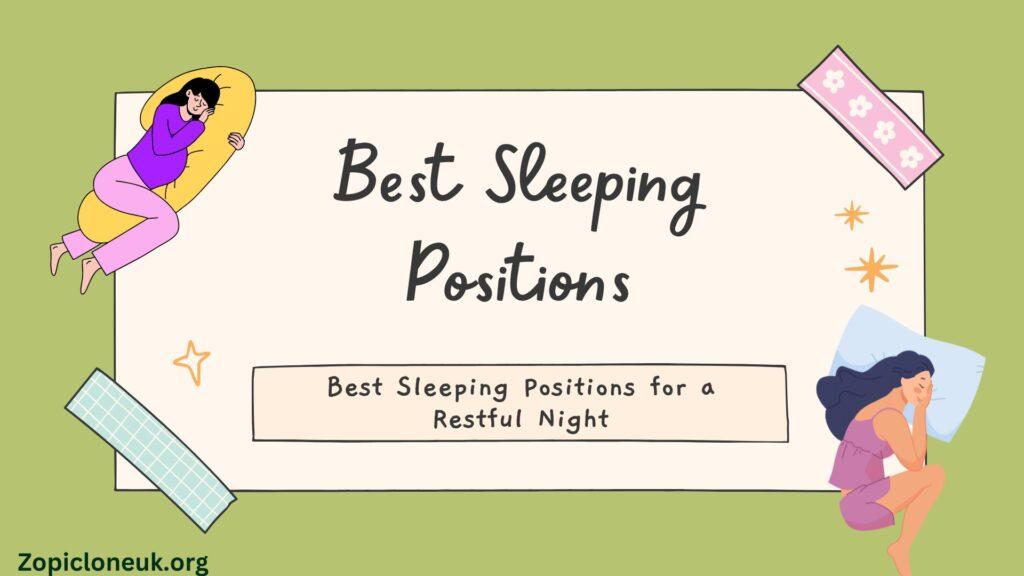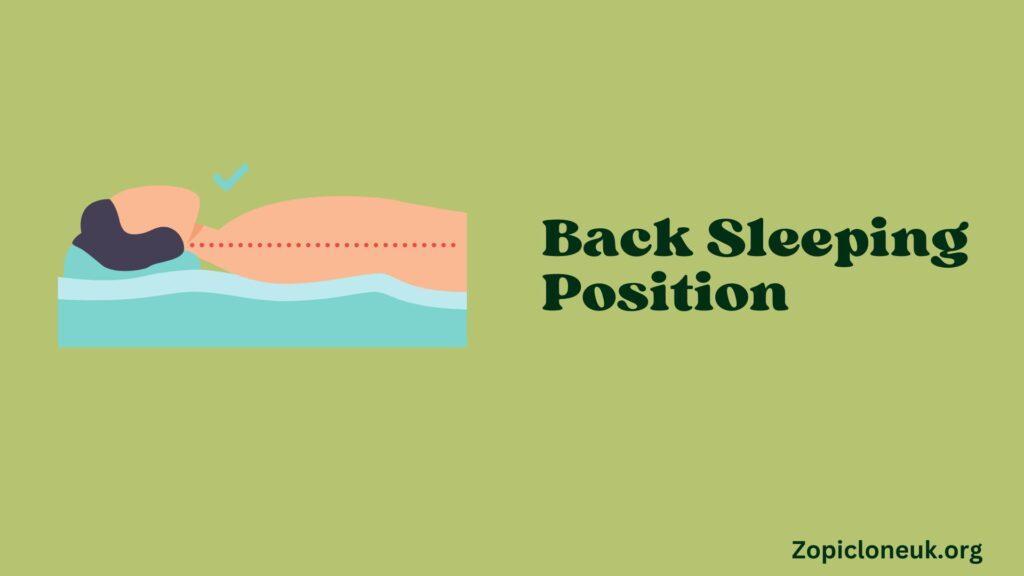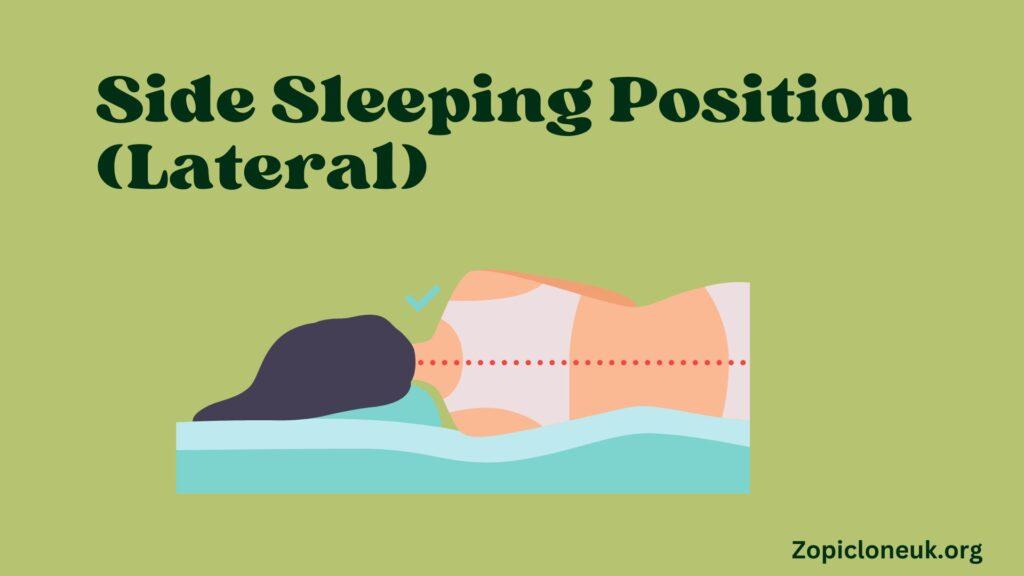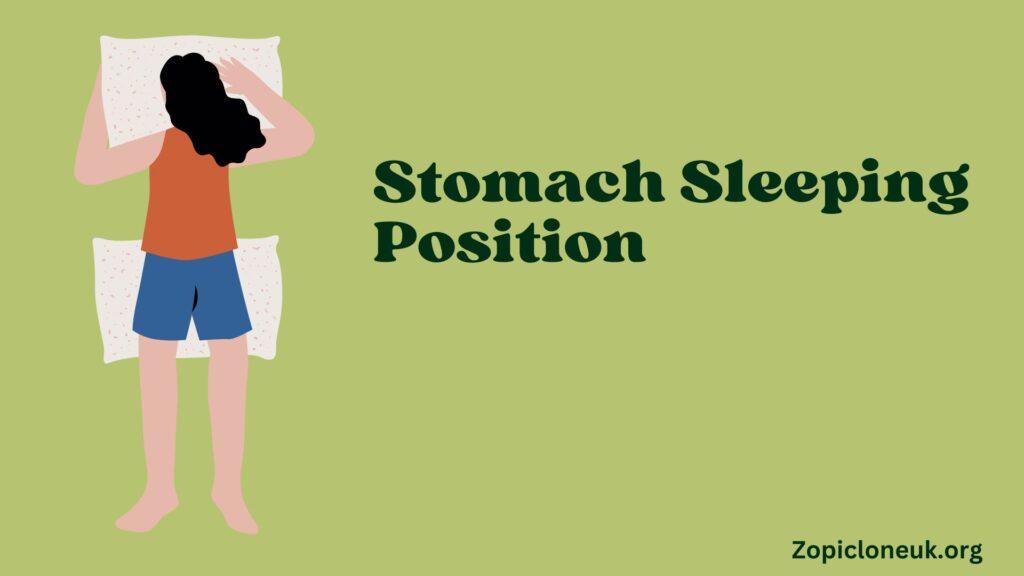
Best Sleeping Positions for a Restful Night:- Getting a good night’s sleep is essential for overall health and well-being. One crucial factor that influences sleep quality is your sleeping position. The way you position your body during sleep can impact everything from your spine health to your risk of developing certain medical conditions. In this blog, we will explore the best sleeping positions and their benefits, helping you make an informed decision for a more restful and rejuvenating sleep.
Contents
The Importance of Sleeping Positions
Sleeping positions play a significant role in ensuring the quality of your sleep. They can affect your breathing, spinal alignment, and even the occurrence of sleep disorders like sleep apnea. Understanding the impact of different sleeping positions can help you choose the one that best suits your needs, promoting better health and comfort.
1. Back Sleeping Position (Supine)
Benefits
Sleeping on your back is often considered one of the best positions for spinal health. This position allows your head, neck, and spine to rest in a neutral alignment, reducing the risk of neck and back pain. It also minimizes pressure on your joints and can help prevent wrinkles and skin breakouts since your face isn’t pressed against a pillow.

Considerations
While back sleeping has many benefits, it is not suitable for everyone. It can exacerbate snoring and sleep apnea in some individuals. To mitigate these issues, using a supportive pillow that elevates the head slightly can help keep the airways open.
2. Side Sleeping Position (Lateral)
Benefits
Side sleeping is the most common position and offers several advantages. It can reduce the risk of developing back and neck pain, as well as alleviate symptoms of sleep apnea and snoring. Side sleeping is also beneficial for digestion and can help prevent acid reflux. For pregnant women, sleeping on the left side improves blood circulation to the heart and fetus.

Considerations
To maintain proper spinal alignment, it’s essential to use a pillow that supports the head and neck. Additionally, placing a pillow between the knees can help align the hips and reduce pressure on the lower back.
3. Fetal Position
Benefits
The fetal position, where you curl up on your side with your knees drawn toward your chest, is another popular sleeping posture. It can be particularly comforting and may help reduce snoring. This position also promotes good spinal alignment and is ideal for pregnant women.

Considerations
While the fetal position offers many benefits, it is essential to avoid curling up too tightly, which can restrict breathing and cause joint discomfort. A supportive pillow and maintaining a relaxed posture can enhance comfort.
4. Stomach Sleeping Position (Prone)
Benefits
Stomach sleeping is less common but can help reduce snoring and sleep apnea. It may also provide comfort for some individuals who prefer this position.

Considerations
Sleeping on your stomach can strain the neck and spine, leading to discomfort and pain. To minimize these issues, use a thin pillow or no pillow at all to keep the head and neck in a more neutral position. It’s also beneficial to place a pillow under the pelvis to maintain spinal alignment.
Additional Tips for Better Sleep
Choosing the Right Mattress
Your mattress plays a crucial role in supporting your chosen sleeping position. A mattress that is too firm or too soft can lead to discomfort and poor spinal alignment. It’s essential to select a mattress that offers adequate support and conforms to your body’s natural curves.
Using the Right Pillows
The type and number of pillows you use can significantly impact your sleep quality. For back sleepers, a pillow that supports the natural curve of the neck is ideal. Side sleepers should use a firm pillow to fill the space between the ear and shoulder. Stomach sleepers may benefit from a thin pillow or no pillow to maintain neck alignment.
Creating a Comfortable Sleep Environment
A conducive sleep environment can enhance the quality of your sleep. Ensure your bedroom is dark, quiet, and cool. Using blackout curtains, earplugs, or white noise machines can help create an optimal sleep setting. Additionally, establishing a bedtime routine and limiting screen time before bed can promote better sleep hygiene.
FAQ
Q: What is the best sleeping position for back pain?
A: The best sleeping position for back pain is usually on your back with a supportive pillow under your knees to maintain spinal alignment. Side sleeping with a pillow between the knees can also help.
Q: Can sleeping on my stomach cause health problems?
A: Sleeping on your stomach can strain the neck and spine, leading to discomfort and pain. Using a thin pillow or no pillow and placing a pillow under the pelvis can help minimize these issues.
Q: Is side sleeping beneficial for pregnant women?
A: Yes, side sleeping, particularly on the left side, is beneficial for pregnant women as it improves blood circulation to the heart and fetus and helps reduce pressure on the liver.
Q: How can I reduce snoring while sleeping?
A: Sleeping on your side can help reduce snoring. Additionally, using a supportive pillow to elevate the head slightly and maintaining a healthy weight can also alleviate snoring.
Q: What type of mattress is best for side sleepers?
A: Side sleepers should choose a mattress that offers a balance of support and cushioning. A medium-firm mattress that conforms to the body’s natural curves can help maintain proper spinal alignment and reduce pressure points.
Conclusion
Choosing the right sleeping position is vital for achieving a restful and rejuvenating night’s sleep. Each sleeping posture offers unique benefits and considerations, and what works best for one person may not be ideal for another. By understanding the advantages and potential drawbacks of different sleeping positions, you can make an informed decision that promotes better health and comfort.
Back sleeping is excellent for spinal alignment and reducing pressure on joints, but it may not be suitable for those who snore or have sleep apnea. Side sleeping, particularly on the left side, offers numerous health benefits, including improved digestion and reduced snoring. The fetal position provides comfort and good spinal alignment but should be practiced with a relaxed posture. Stomach sleeping can help reduce snoring but may strain the neck and spine, requiring careful pillow selection.
Beyond choosing the right sleeping position, investing in a supportive mattress and appropriate pillows is essential for maintaining proper alignment and comfort. Creating a sleep-friendly environment with minimal distractions and a consistent bedtime routine can further enhance sleep quality.
Ultimately, the best sleeping position is one that allows you to wake up feeling refreshed and pain-free. It may take some experimentation to find the most comfortable posture, but the effort is well worth it for the sake of your overall health and well-being.
Author Details




Medical content by qualified psychiatrists
Our editorial policy

Zopiclone precautions Read our potential abuse notice

Looking for a seller? Locate the best Zopiclone vendor






